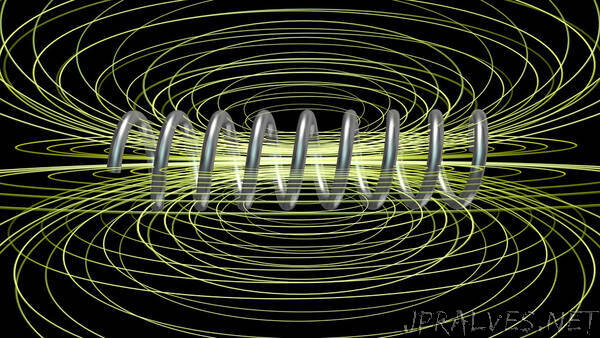
“Physicists at Bath have uncovered a new mechanism for enabling magnetism and superconductivity to co-exist in the same material.
Physicists at the University of Bath, in collaboration with researchers from the USA, have uncovered a new mechanism for enabling magnetism and superconductivity to co-exist in the same material. Until now, scientists could only guess how this unusual coexistence might be possible. The discovery could lead to applications in green energy technologies and in the development of superconducting devices, such as next-generation computer hardware.
As a rule, superconductivity (the ability of a material to pass an electrical current with perfect efficiency) and magnetism (seen at work in fridge magnets) make poor bedfellows because the alignment of the tiny electronic magnetic particles in ferromagnets generally leads to the destruction of the electron pairs responsible for superconductivity. Despite this, the Bath researchers have found that the iron-based superconductor RbEuFe4As4, which is superconducting below -236°C, exhibits both superconductivity and magnetism below -258°C.
Physics postgraduate research student David Collomb, who was a key member of the research team led by Professor Simon Bending, explained: “There’s a state in some materials where, if you get them really cold – significantly colder than the Antarctic – they become superconducting. But for this superconductivity to be taken to next-level applications, the material needs to show co-existence with magnetic properties. This would allow us to develop devices operating on a magnetic principle, such as magnetic memory and computation using magnetic materials, to also enjoy the benefits of superconductivity.
“The problem is that superconductivity is usually lost when magnetism is turned on. For many decades, scientists have tried to explore a host of materials that have both properties in a single material, and material scientists have recently had some success fabricating a handful of such materials. However, so long as we don’t understand why the coexistence is possible, the hunt for these materials can’t be done with as fine a comb.
“This new research gives us a material that has a wide temperature range where these phenomena co-exist, and this will allow us to study the interaction between magnetism and superconductivity more closely and in great detail. Hopefully, this will result in us being able to identify the mechanism through which this co-existence can occur.”
In a study published in Physical Review Letters, the team investigated the unusual behaviour of RbEuFe4As4 by creating magnetic field maps of a superconducting material as the temperature was dropped. To their surprise, they found the vortices (the points in the superconducting material where the magnetic field penetrates) showed a pronounced broadening near the temperature of -258°C, indicating a strong suppression of superconductivity as the magnetism turned on.
These observations agree with a theoretical model recently proposed by Dr Alexei Koshelev at Argonne National Laboratory in the USA. This theory describes the suppression of superconductivity by magnetic fluctuations due to the Europium (Eu) atoms in the crystals. Here, the magnetic direction of each Eu atom begins to fluctuate and align with the others, as the material drops below a certain temperature. This causes the material to become magnetic. The Bath researchers conclude that while superconductivity is considerably weakened by the magnetic effect, it is not fully destroyed.
“This suggests that in our material, the magnetism and superconductivity are held apart from each other in their own sub-lattices, which only minimally interact,” said Mr Collomb.
“This work significantly advances our understanding of these rare coexisting phenomena and could lead to possible applications in the superconducting devices of the future. It will spawn a deeper hunt into materials that display both superconductivity and magnetism. We hope it will also encourage researchers in more applied fields to take some of these materials and make the next-generation computing devices out of them.
“Hopefully, the scientific community will gradually enter an era where we move from blue-sky research to making devices from these materials. In a decade or so, we could be seeing prototype devices using this technology that do a real job.”
Professor Bending added: “Our main result, that the onset of magnetism strongly suppresses superconductivity, is rather surprising and, on the face of it, appears to contradict previous measurements on very similar samples. However, RbEuFe4As4 is an extremely complex material in which the electrons and holes responsible for superconductivity exist in several separate bands. Each of these contributes a different amount to the superconducting state and interacts differently with the magnetic europium atoms. As a result, any observations can be very sensitive to the exact details of the measurement being made.”
The American collaborators for this project were the Argonne National Laboratory, Hofstra University and Northwestern University.”
